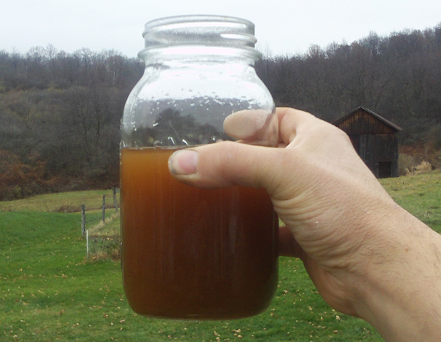Potential Shale Gas Extraction Air Pollution Impacts
August 24, 2010Feds Warn Residents Near Wyoming Gas Drilling Sites Not to Drink Their Water
September 3, 2010Dimock, Pennsylvania (CNN) — Bill Ely walked into his chicken coop with an empty five-gallon water jug.
The jug, punched with several finger-sized holes near the top to keep it from overflowing, was capped with a white plastic pipe. Using a garden hose fed from his water well, he filled the jug.
Leaning over the contraption, he flicked his yellow lighter above the pipe, and a blue flame appeared.
“I knew it [the water] went bad because we could light it,” Ely said.
Dimock residents are at the forefront of one of the biggest energy developments this century.
Their township sits above the Marcellus Shale, one of the largest natural gas deposits in the nation found underneath parts of Pennsylvania, New York, West Virginia and Ohio. The natural gas reserve is attracting a flurry of gas companies wanting to drill.
Accessing the natural gas involves the controversial process of hydraulic fracturing, or “fracking.”
Fracturing requires drillers to pump large amounts of water mixed with sand and chemicals into the shale formation under high pressure to depths 8,000 feet or greater or even wells less than 1,000 feet, according to the U.S. Environmental Protection Agency. This process fractures the shale around the well, which allows the natural gas to flow freely, according to the Pennsylvania Department of Environmental Protection.



